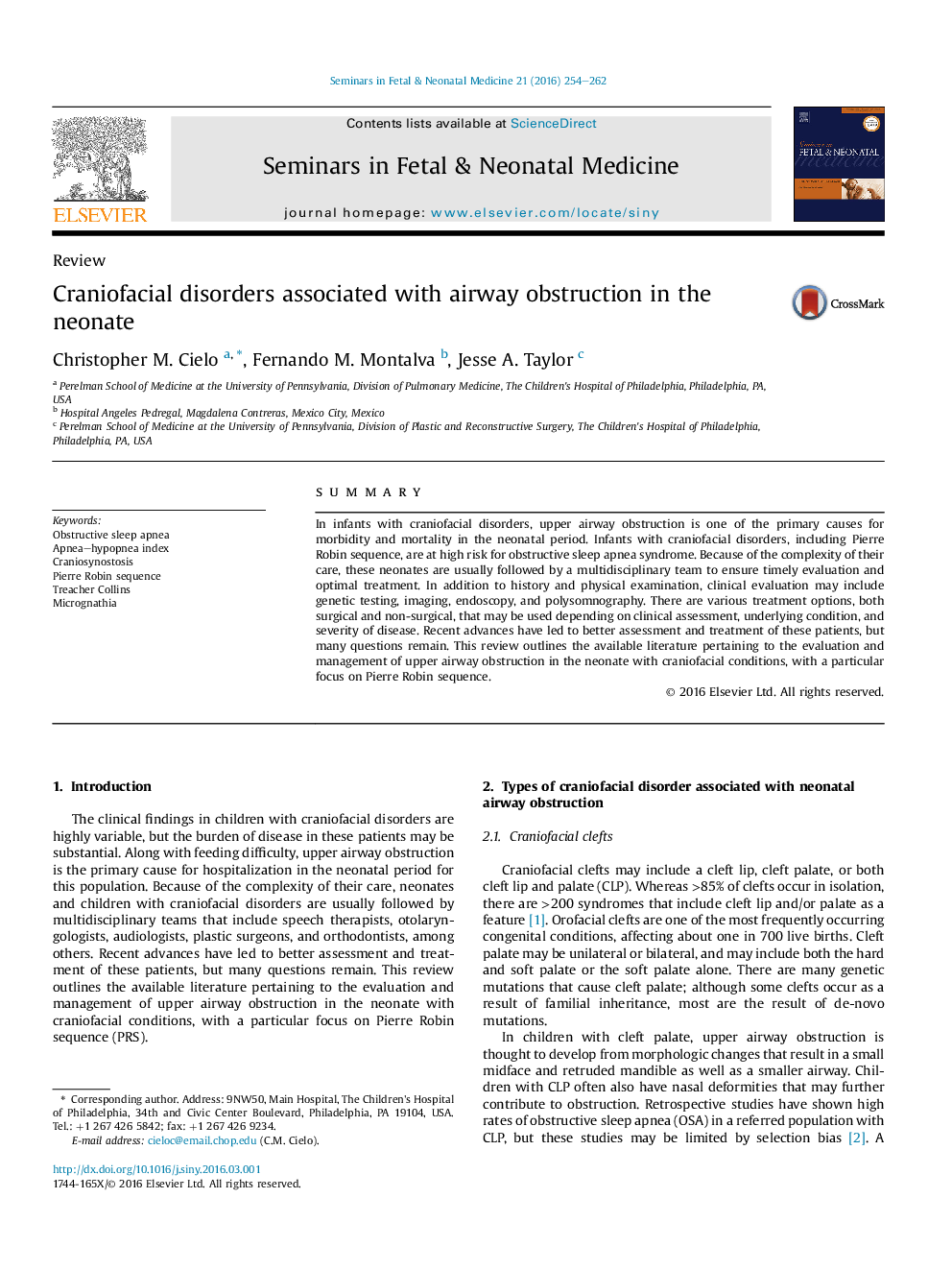| Article ID | Journal | Published Year | Pages | File Type |
|---|---|---|---|---|
| 3973939 | Seminars in Fetal and Neonatal Medicine | 2016 | 9 Pages |
SummaryIn infants with craniofacial disorders, upper airway obstruction is one of the primary causes for morbidity and mortality in the neonatal period. Infants with craniofacial disorders, including Pierre Robin sequence, are at high risk for obstructive sleep apnea syndrome. Because of the complexity of their care, these neonates are usually followed by a multidisciplinary team to ensure timely evaluation and optimal treatment. In addition to history and physical examination, clinical evaluation may include genetic testing, imaging, endoscopy, and polysomnography. There are various treatment options, both surgical and non-surgical, that may be used depending on clinical assessment, underlying condition, and severity of disease. Recent advances have led to better assessment and treatment of these patients, but many questions remain. This review outlines the available literature pertaining to the evaluation and management of upper airway obstruction in the neonate with craniofacial conditions, with a particular focus on Pierre Robin sequence.
